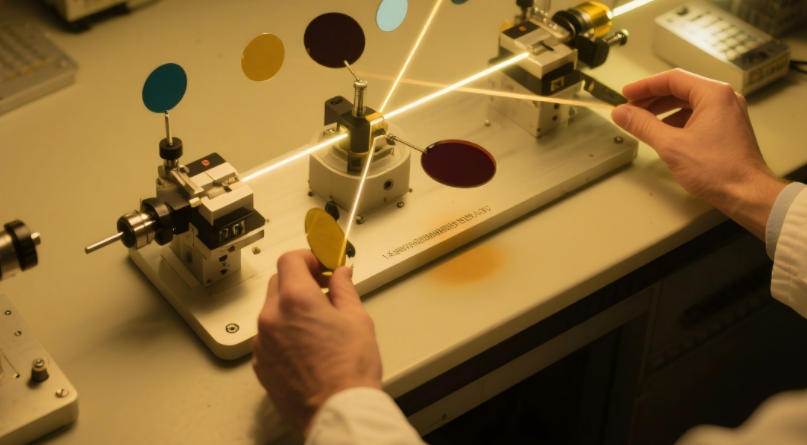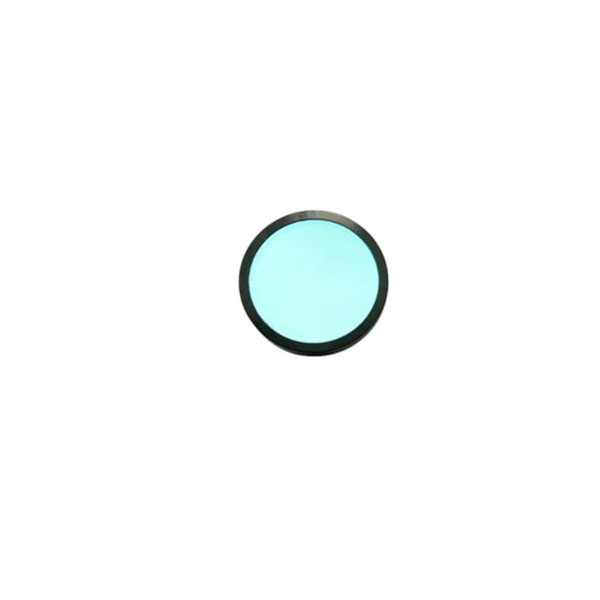Your Best Ultra Narrow Bandpass Filter China Manufacturer
Ultra-narrow bandpass filters refer to optical bandpass filters with extremely narrow transmission bandwidths. As one of the few global manufacturers mastering sub-nanometer bandwidth control technology, we provide ultra-narrow bandpass filters with bandwidths as low as 0.25 nm for advanced applications such as LiDAR, quantum communication, and high-resolution spectrometers.
- Unmatched narrowband performance with bandwidth limits down to 0.25 ± 0.1 nm
- Ultra-high transmission (>90%)
- Out-of-band blocking greater than OD6
- Excellent passband squareness
- Manufactured using IAD (Ion-Assisted Deposition) and IBS (Ion Beam Sputtering) technologies
Ultra Narrow Bandpass Filter Series
Ultra Narrow Bandpass Filter Applications

Raman Spectroscopy
Ultra-narrow bandpass filters are used to selectively transmit the specific, narrow wavelengths corresponding to Raman scattering signals, while effectively blocking the intense background light from the excitation laser. This significantly enhances the signal-to-noise ratio and accurately separates the weak Raman signals from excitation light leakage.

Laser LiDAR
Ultra-narrow bandpass filters are used in LiDAR systems at the receiver end to block background interference such as sunlight, enhancing detection accuracy and improving ranging sensitivity. They allow only the center wavelength of the return laser signal (e.g., 905nm, 1064nm, or 1550nm) to pass through.

Laser Line Selection and Suppression
In multi-laser systems, ultra-narrow bandpass filters are used to select specific laser wavelengths or eliminate non-target wavelengths from powerful laser sources. This enables precise output of a single laser wavelength or clean extraction of a single-wavelength signal, effectively preventing crosstalk.

Astronomical Spectral Analysis
In astronomical observation, ultra-narrow bandpass filters are used to precisely select specific spectral lines emitted by stars or nebulae (such as Hα at 656.3 nm or OIII at 500.7 nm), while suppressing sky background and stray light. This enhances the contrast and sensitivity of deep-sky imaging and spectral line analysis.
FAQs
An ultra narrow bandpass filter is an optical filter that allows only a very narrow range of wavelengths to pass through, while strongly blocking ultraviolet, visible, and infrared light outside the passband. The typical full width at half maximum (FWHM) is less than 5nm, and can even reach levels below 1nm.
The typical range is 0.5–3nm, and more precise devices can achieve bandwidths below 0.1nm.
Regular bandpass filters generally have a wider bandwidth, with blocking depths between OD2 and OD6, mainly used for imaging or illumination.
Ultra narrow bandpass filters have a much narrower bandwidth, usually less than 3nm or even below 1nm, with a blocking depth above OD4. They are primarily used in spectroscopy, laser systems, and scientific research.
-
Raman Spectroscopy: Used to separate weak Raman signals from strong laser background.
-
Laser Fluorescence Detection: Used to match the emission peaks of fluorescent dyes and suppress side-mode noise from lasers.
-
Environmental Monitoring: Used to detect gases such as NO₂ and SO₂.
-
Astronomical Observation: Used to capture galaxy Hα lines and eliminate interference from city sodium lights.
Yes, we currently offer custom ultra narrow bandpass filters with center wavelengths ranging from 250nm to 2000nm, and bandwidths from 0.1nm to 5nm, with blocking depths up to OD6 or higher.



